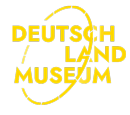The development of German military helmets
Military stalemate in the trench warfare of 1916 put an end to the long German tradition of the spiked leather Pickelhaube. No longer offering sufficient protection against the dangers of modern warfare, military planners ordered its replacement by something called a “splinter protection helmet” which later became known as a “Stahlhelm” or “steel helmet”.
With its characteristic coal scuttle shape providing protection for both head and neck, each model of steel helmet was named after the year in which it was introduced. The M16 (introduced in 1916) formed the basis for all further helmets up to the end of the Second World War. The M18 incorporated a number of improvements drawn from field experience.
The M18 Stahlhelm
Manufactured from drawn sheet steel, the M18 weighed between 1180 and 1380 g, depending on its size. Ventilation holes on its side ensured a flow of air around the head. The reflective smooth greenish surface of the M16 – which caused undesirable light reflections and gave away the position of its wearer – was replaced by the rougher surface and dark grey colouring of the M18.
Another fundamental difference between the two models was the chin fastening, which had a major influence on the fit of the helmet. Whilst the strap on the 1916 model was attached to the edge of the helmet using the same system as the Pickelhaube, the strap on the M18 attached to the leather inner fastening of the helmet.

“The German steel helmet as the personification of the enemy” American propaganda poster from the Second World War, Glenn Grohe, USA, 1942 (Source: Illinois State Library)
Although a new model of helmet was introduced in 1935, the design quality of the M18 meant that it remained in service both in the military and in civilian units such as the police and fire brigade. As is clear from its marking with the imperial eagle and swastika, the M18 shown in the Deutschlandmuseum dates from the Second World War
The powerful symbolism of the Stahlhelm
Apart from its purely military use, the steel helmet also rapidly became a symbol of military community for soldiers and ex-servicemen alike. It stood for the values of strength and dedication ascribed to its wearers.
The speed with which this new development was taken to heart was indicated by its used as the symbol of the post-1918 ex-servicemen’s organization Stahlhelm, Bund der Frontsoldaten. Boasting a membership of up to 500,000, this nationalist, anti-democratic paramilitary grouping remained a constant background presence in the politics of the Weimar Republic. Dissolved during the Third Reich, it was re-constituted in 1951 as Der Stahlhelm e.V. This extreme right-wing organisation was not dissolved until 2000.
Left-wingers viewed the Stahlhelm as the symbol of militarism and death. Seeking to articulate a left-wing critique of interwar German society, George Grosz’ painting The Pillars of Society from 1926 incorporates the sinister presence of a soldier wearing a steel helmet as the symbol of one of the pillars of a rotten society. The longer-term influence of this iconic piece of military headgear was manifested in the design of the helmet of Darth Vader, one of the most famous film villains of all time.
The exhibit on display in the Deutschlandmuseum reminds visitors not just of a dark chapter of German history, but provides a cautionary reminder of the effects of war in general.
Property information
Designation
- Date 1940s
- Gallery The Third Reich
- Category Headgear
- Origin Germany
- Dimensions 25x20x30 cm (WxHxD)
- Material Leder, metal
Property information
Designation
- Datierung 1940s
- Epochenraum The Third Reich
- Kategorie Headgear
- Herkunft Germany
- Dimensionen 25x20x30 cm (WxHxD)
- Material Leder, metal

About the Deutschlandmuseum
An immersive and innovative experience museum about 2000 years of German history
Reading tips and links
Lifesaver? The German Steel Helmet in the First World War
German Tank Museum Munster
Lifesaver? The German Steel Helmet in the First World War
German Tank Museum Munster
Share article
Other objects in this collection
Discover history

Visit the unique Deutschlandmuseum and experience immersive history
2000 Jahre
12 Epochen
1 Stunde




